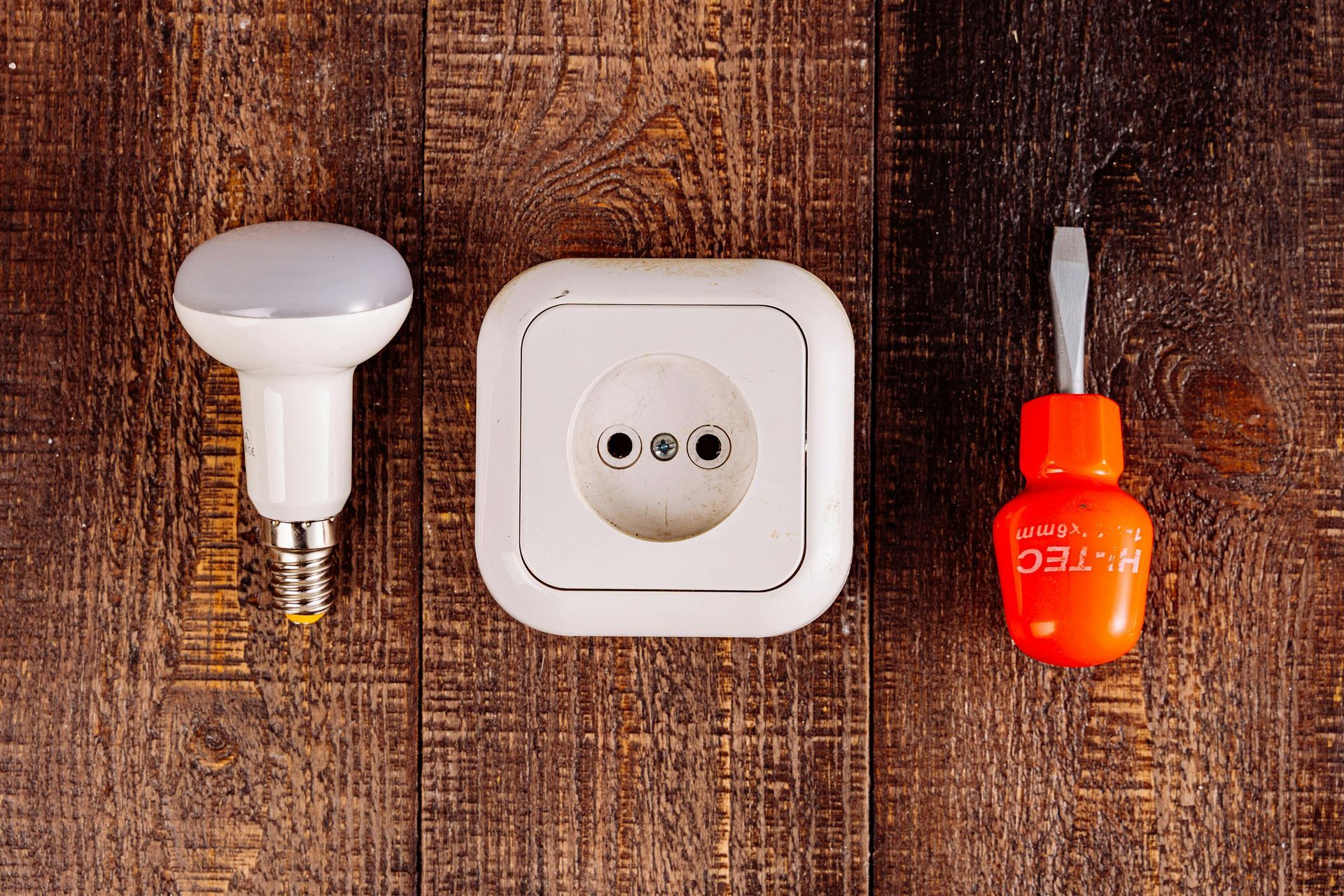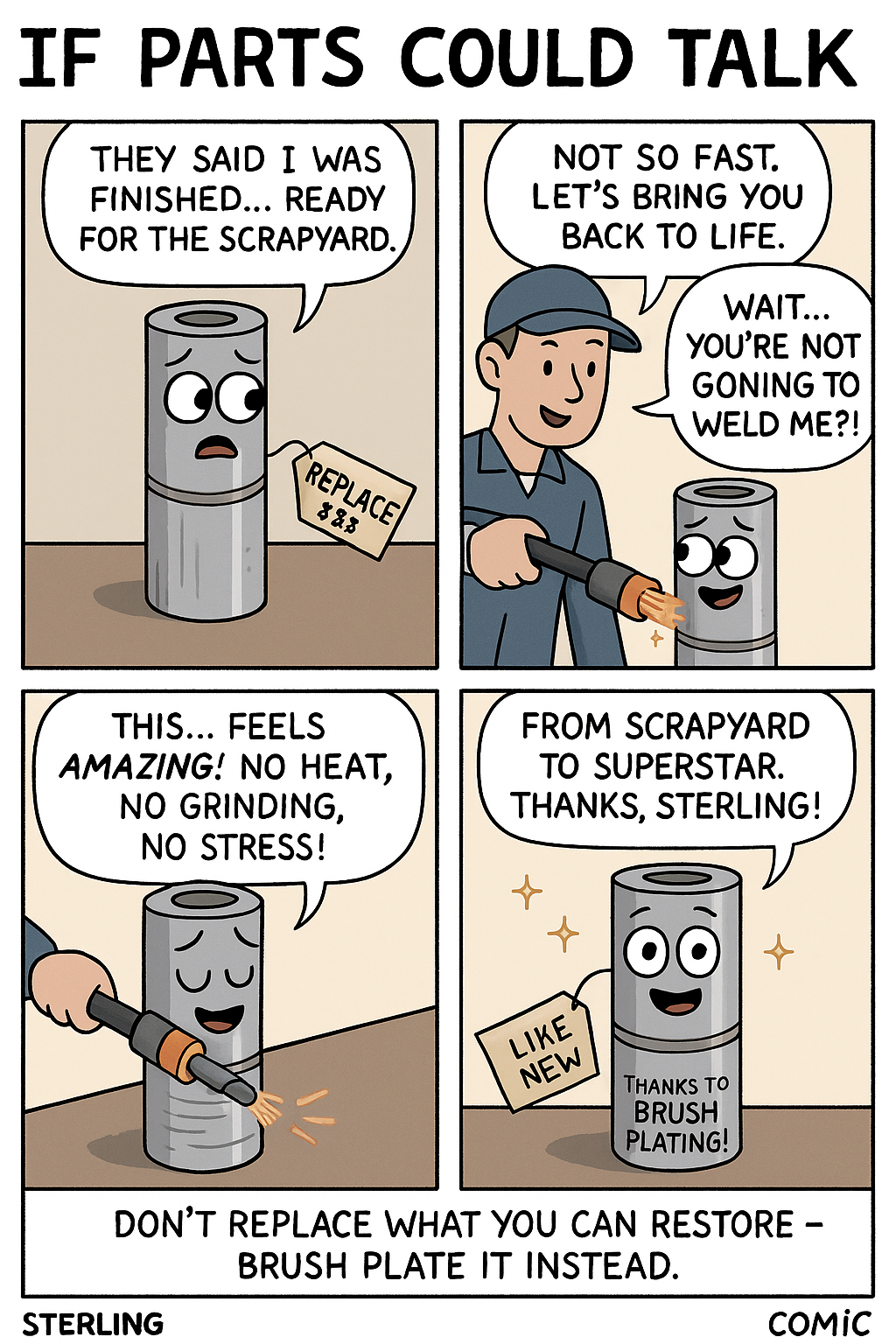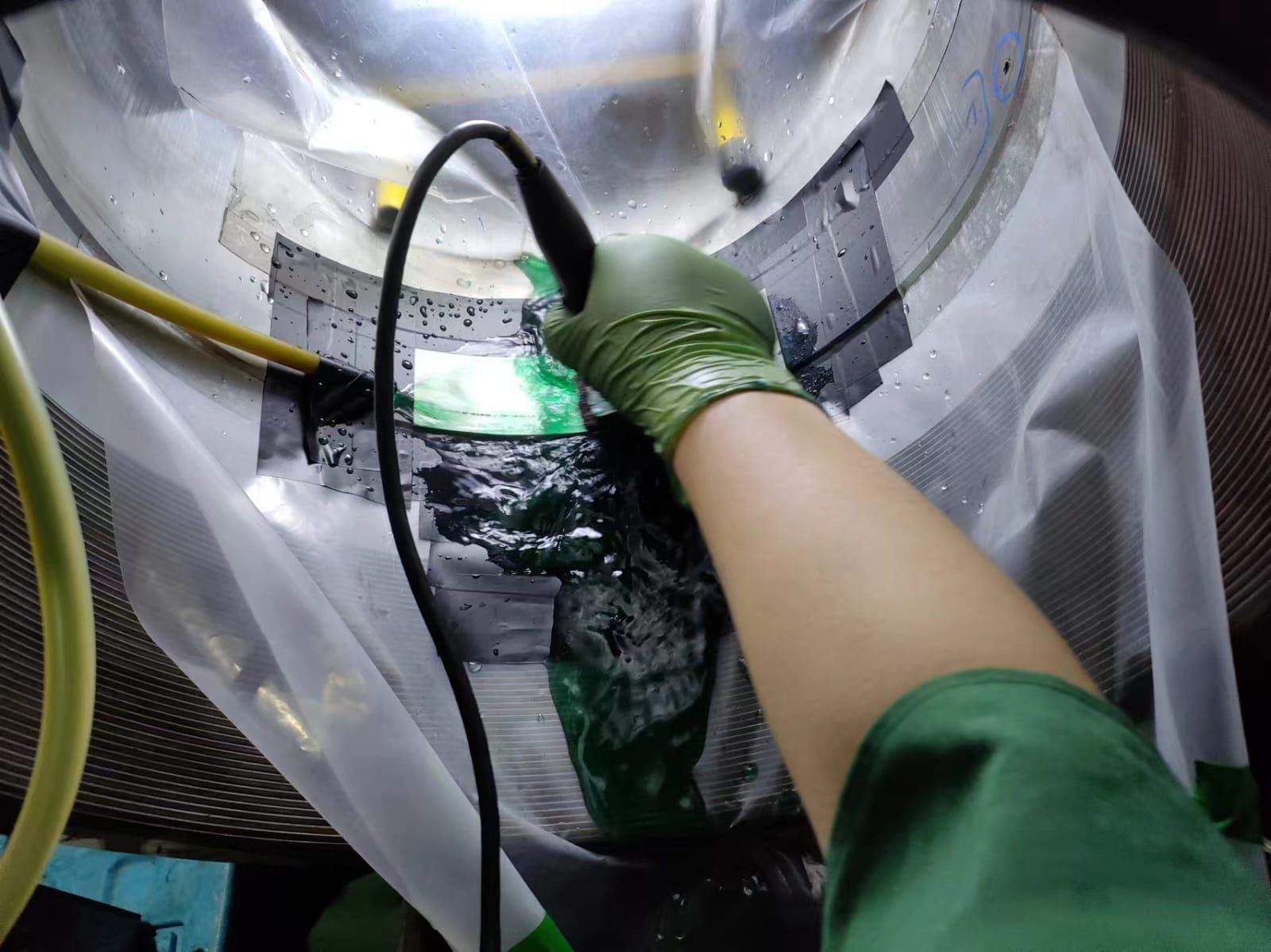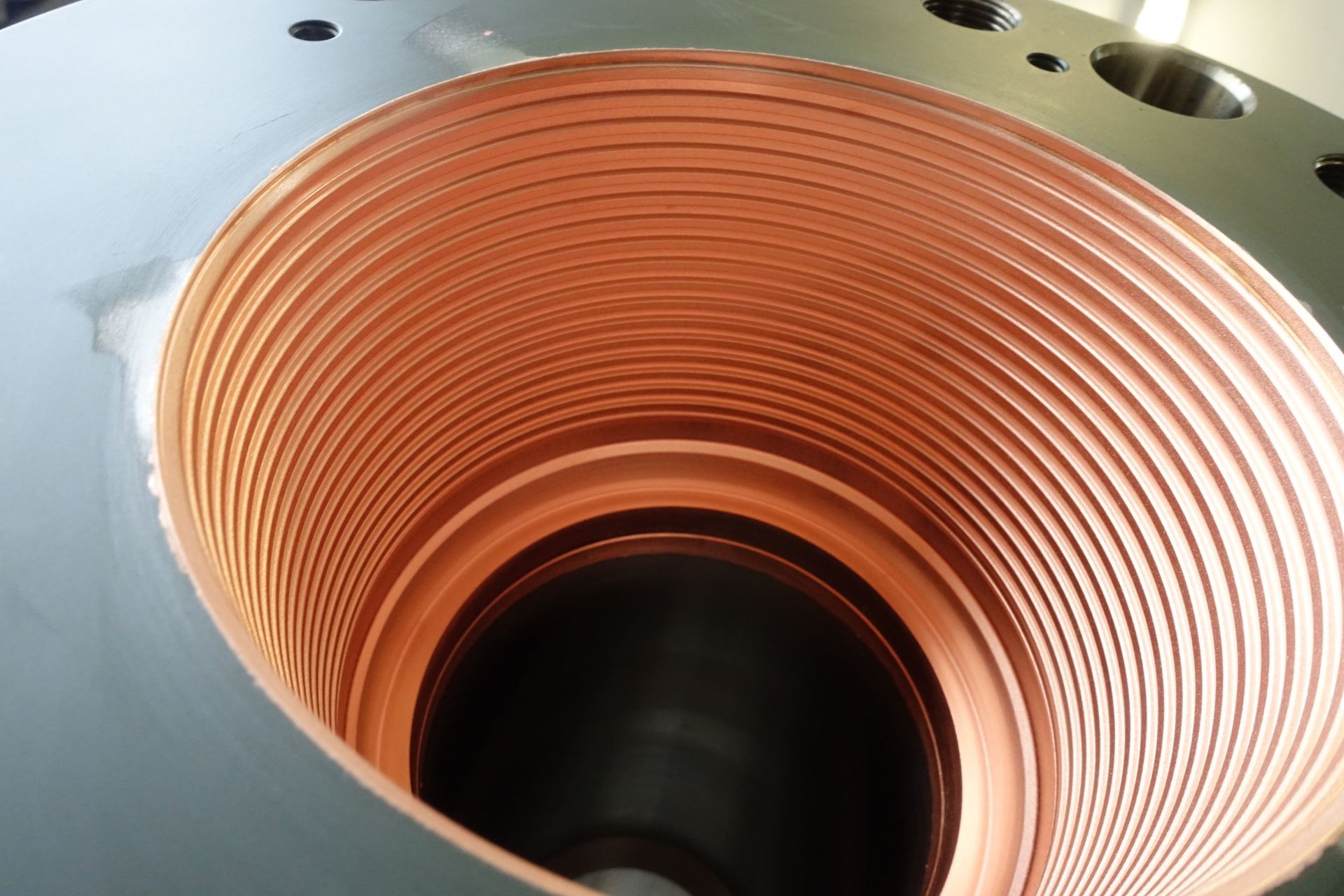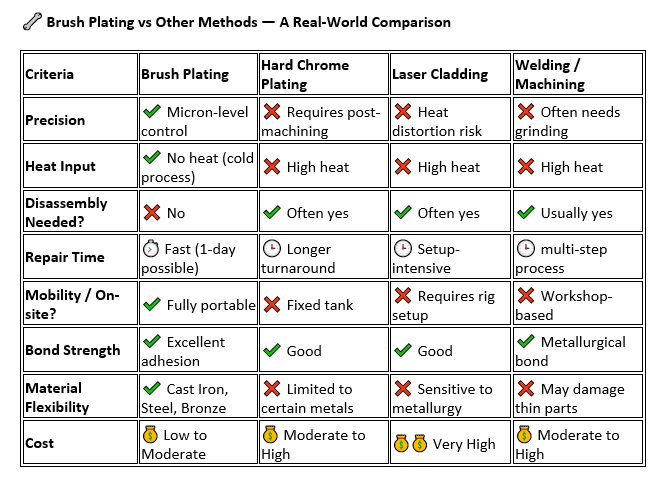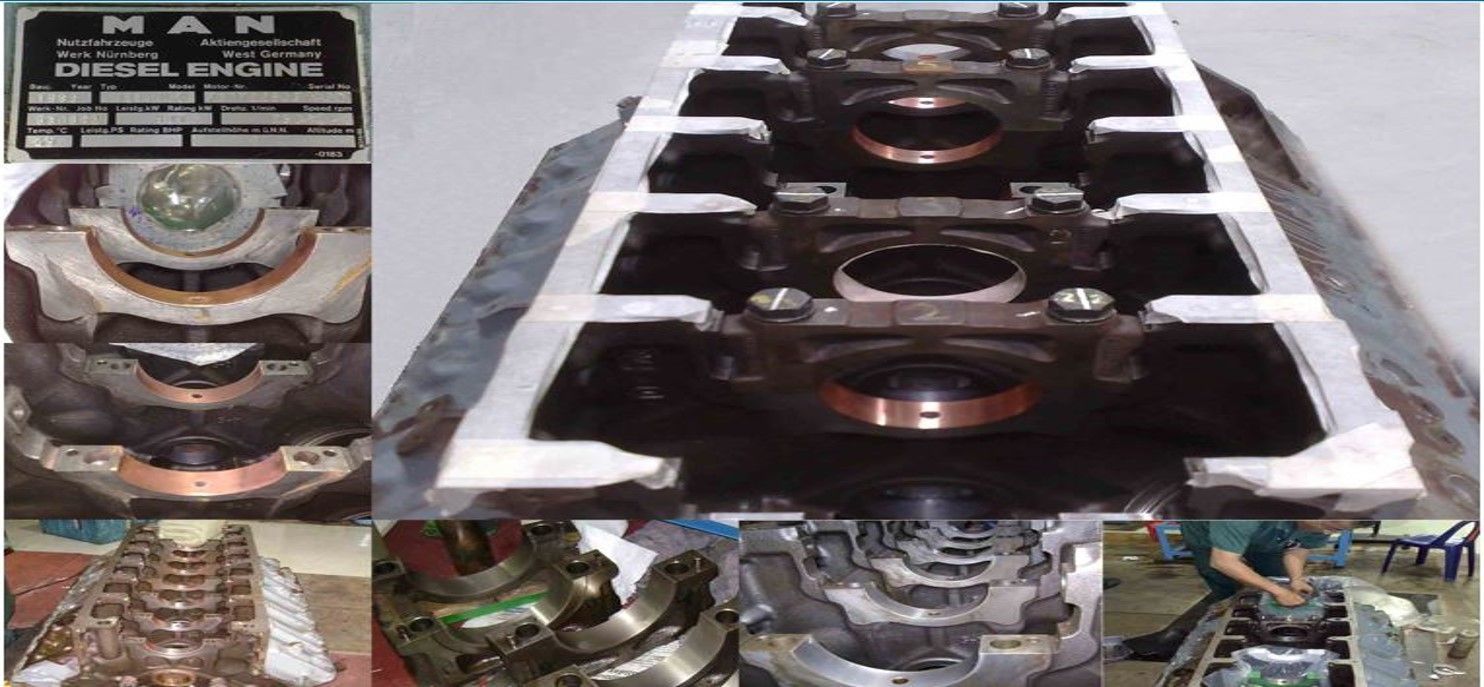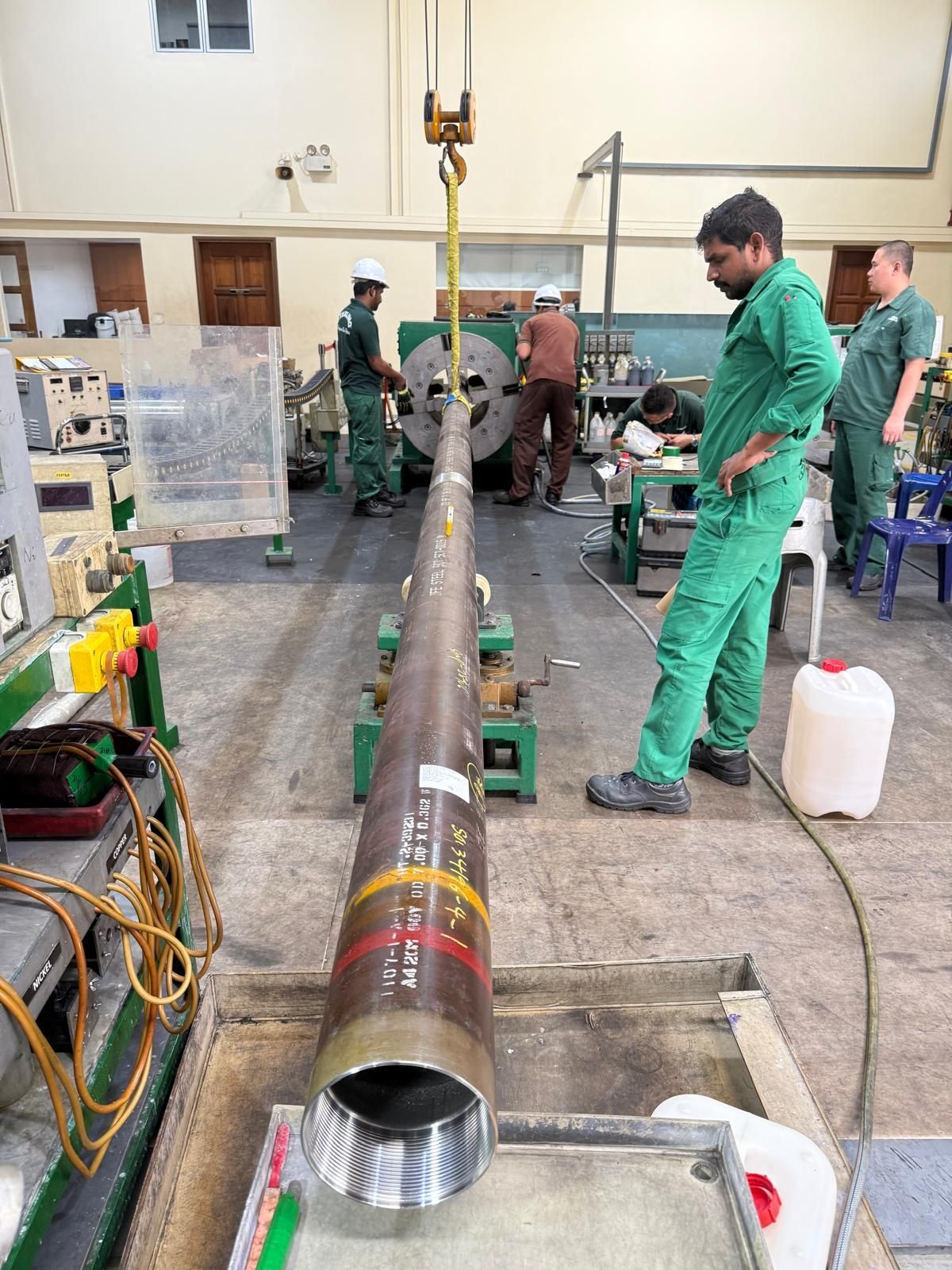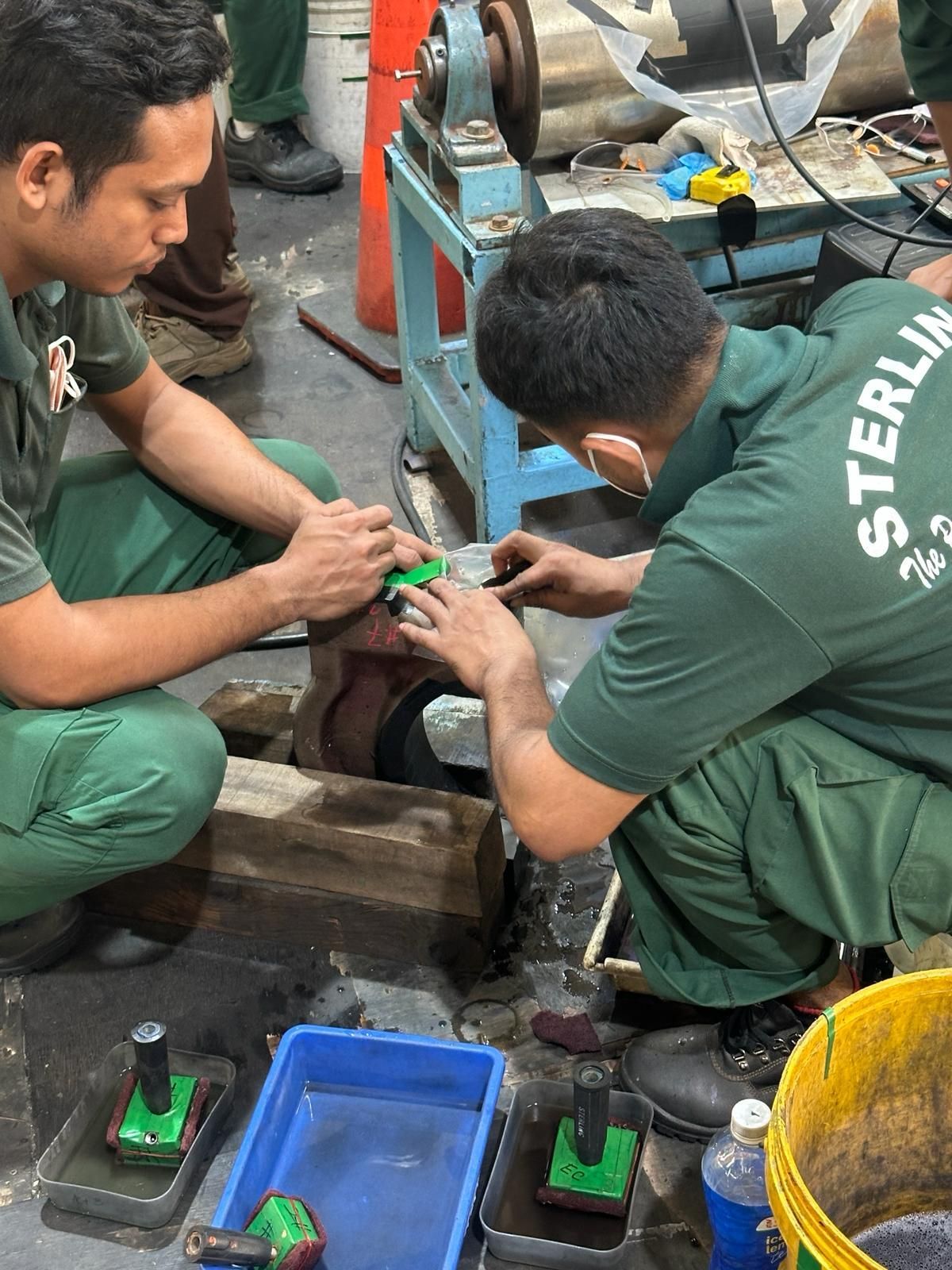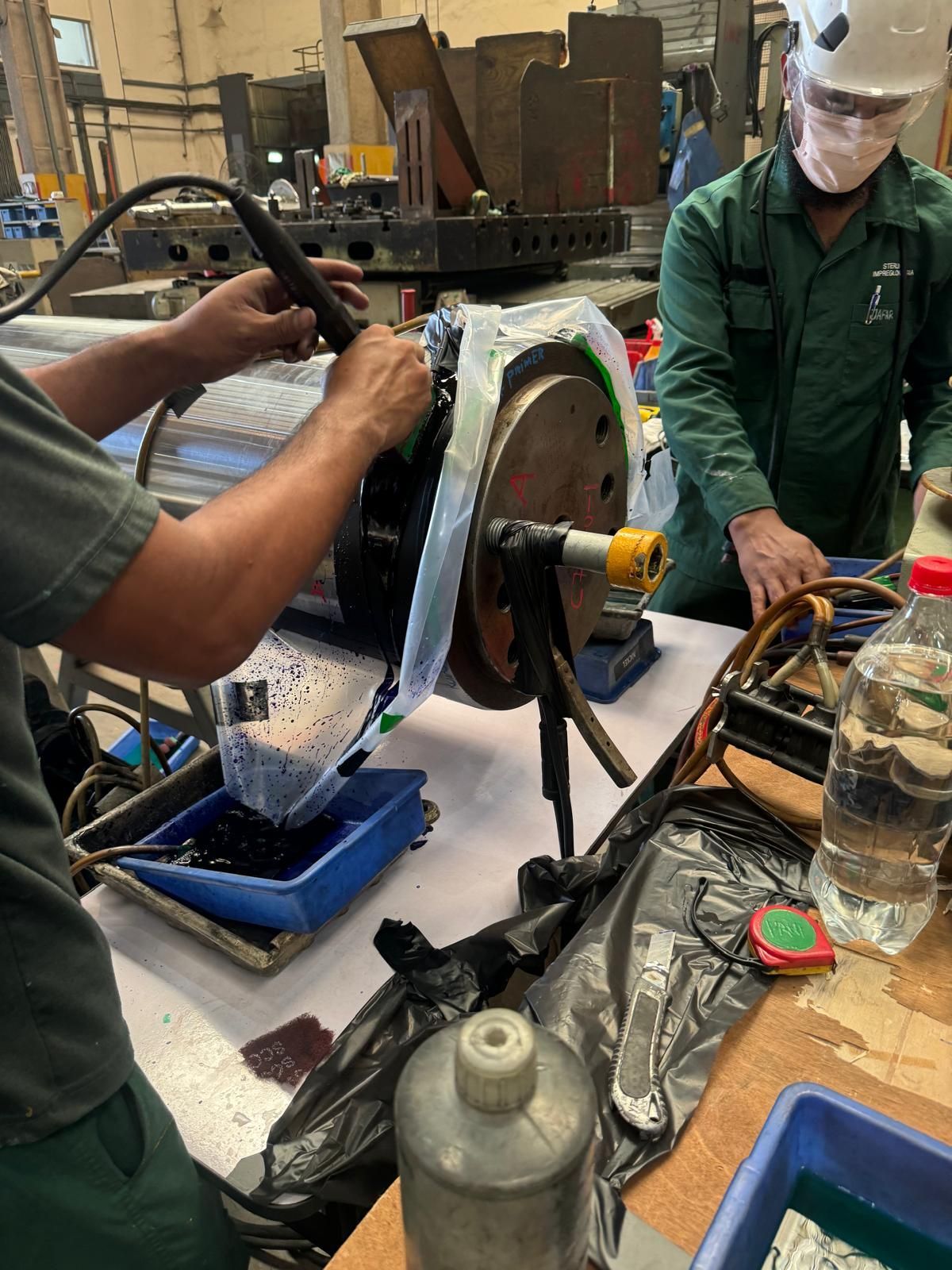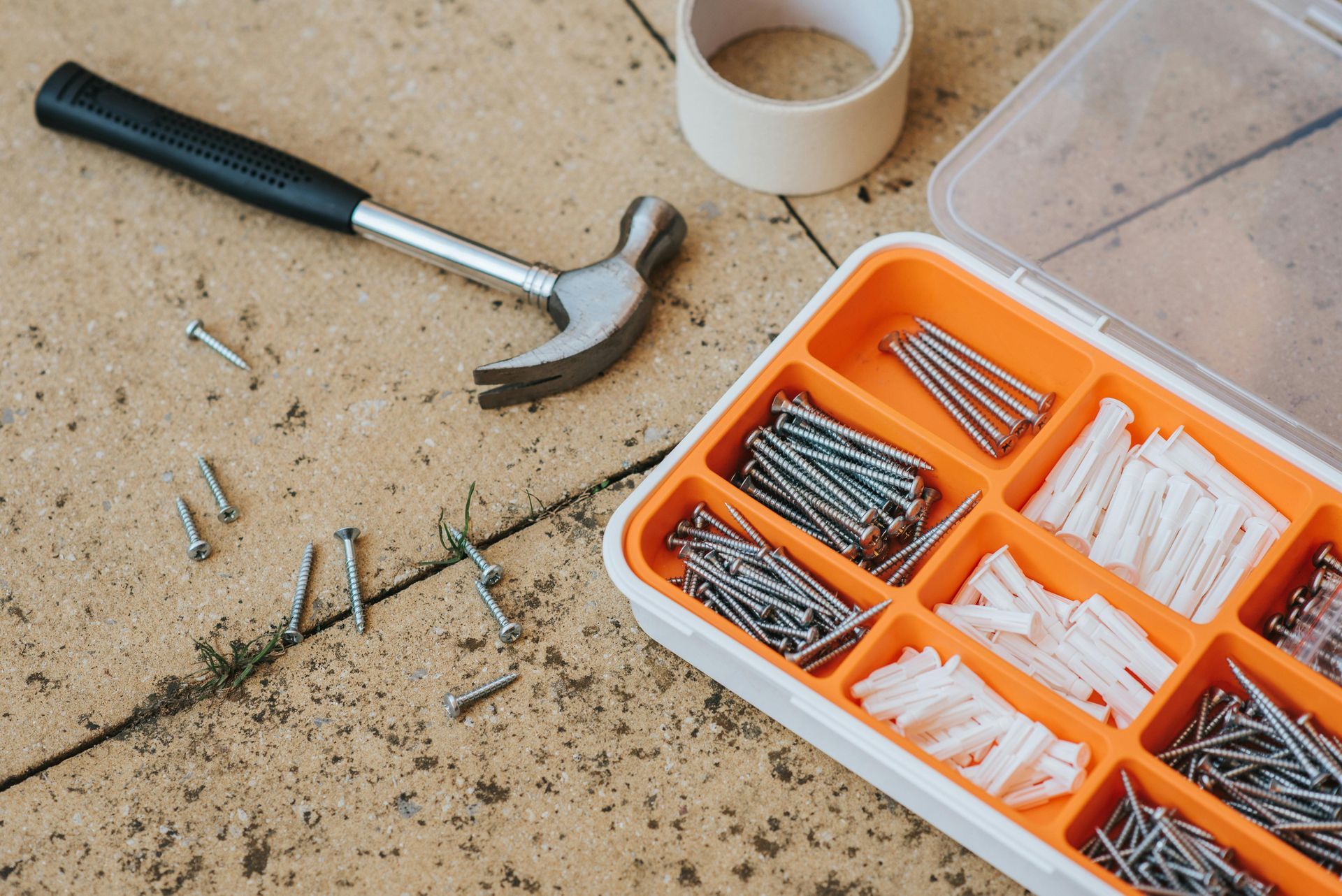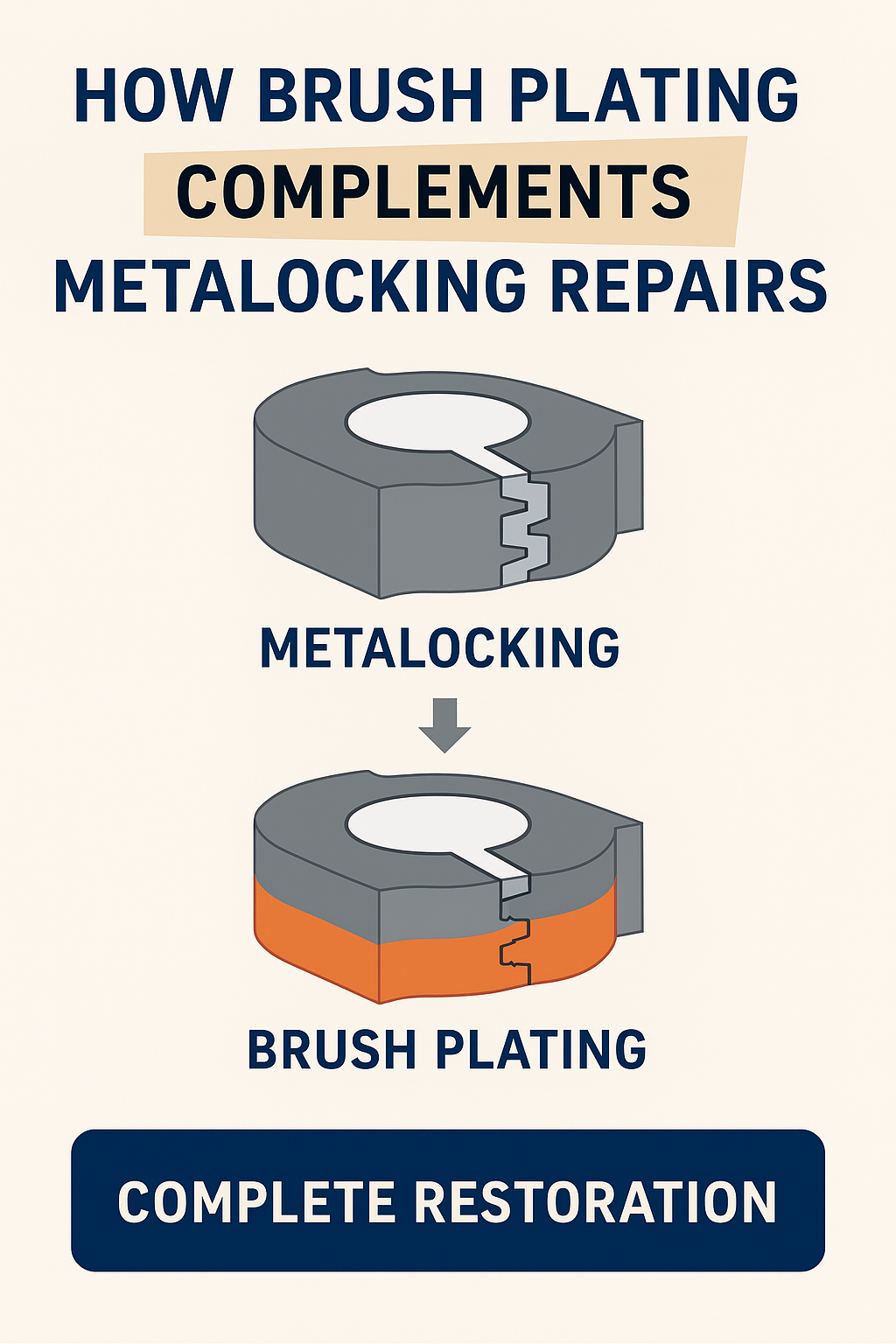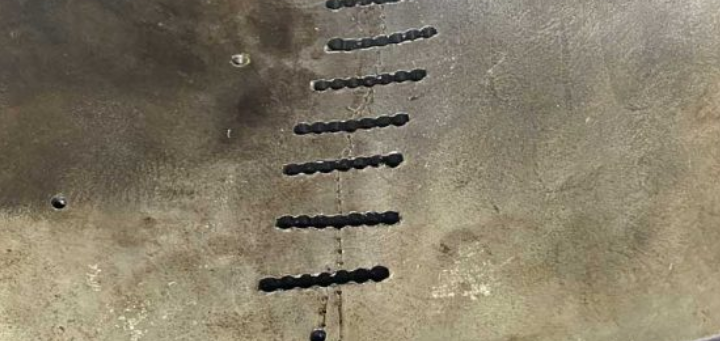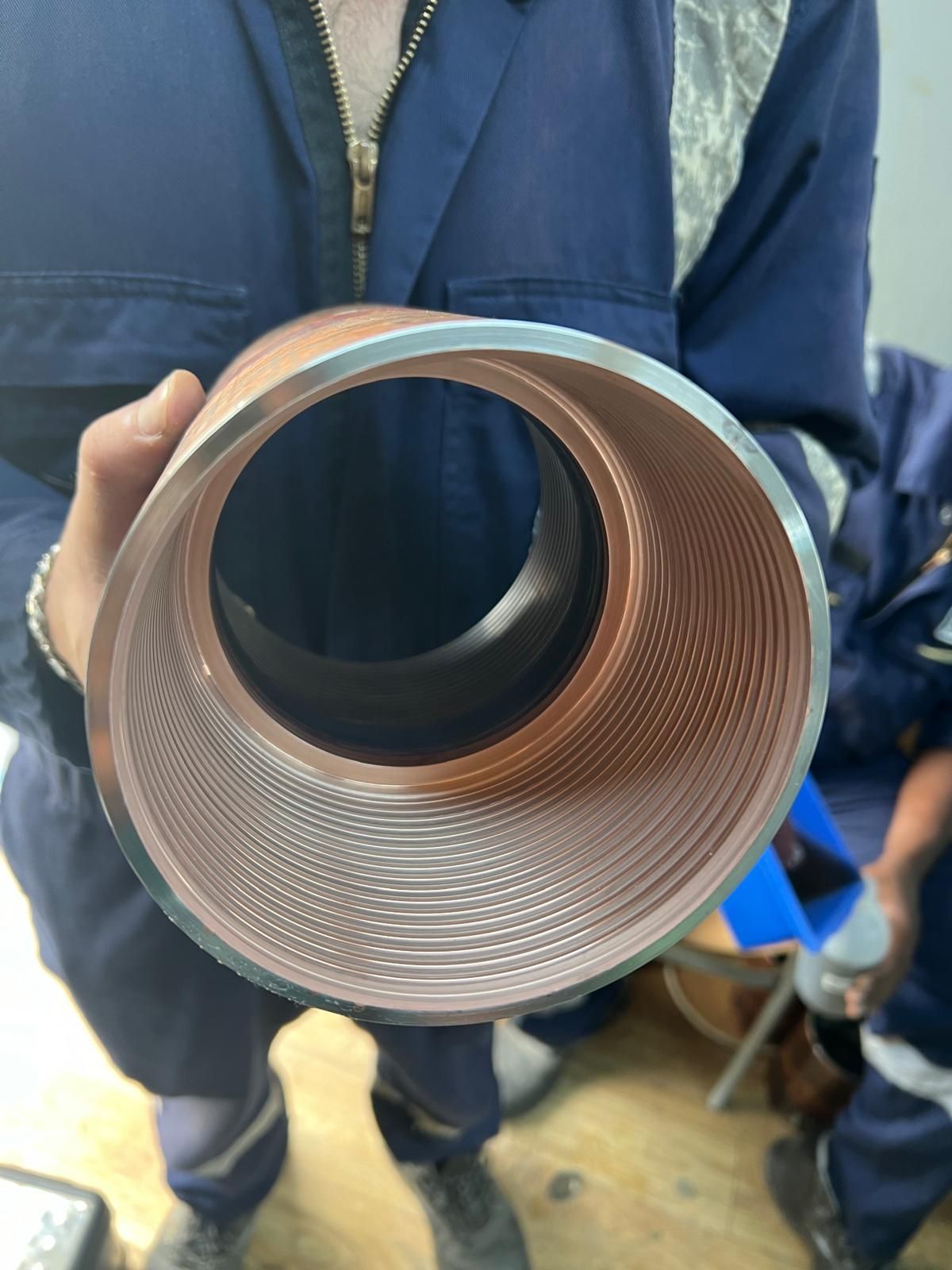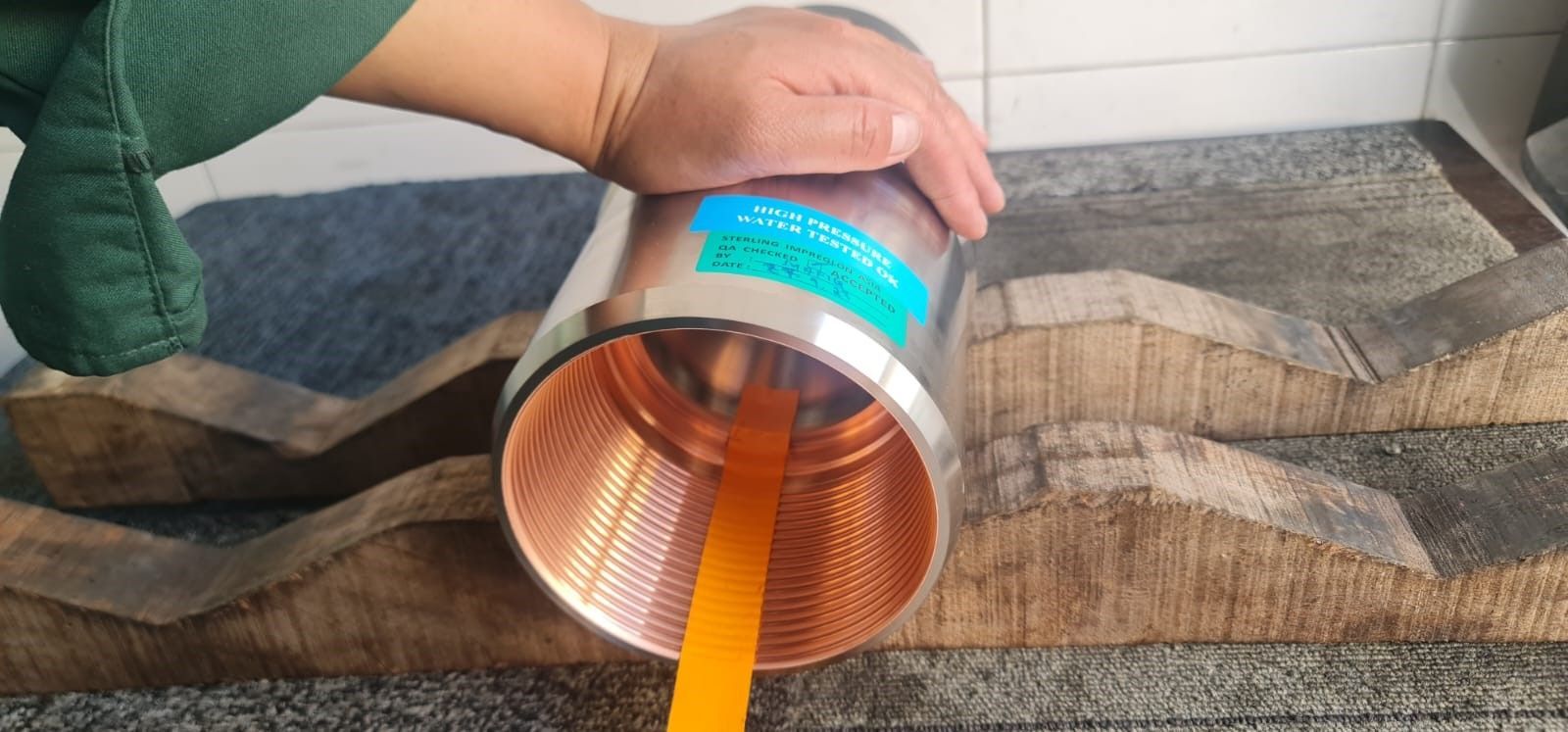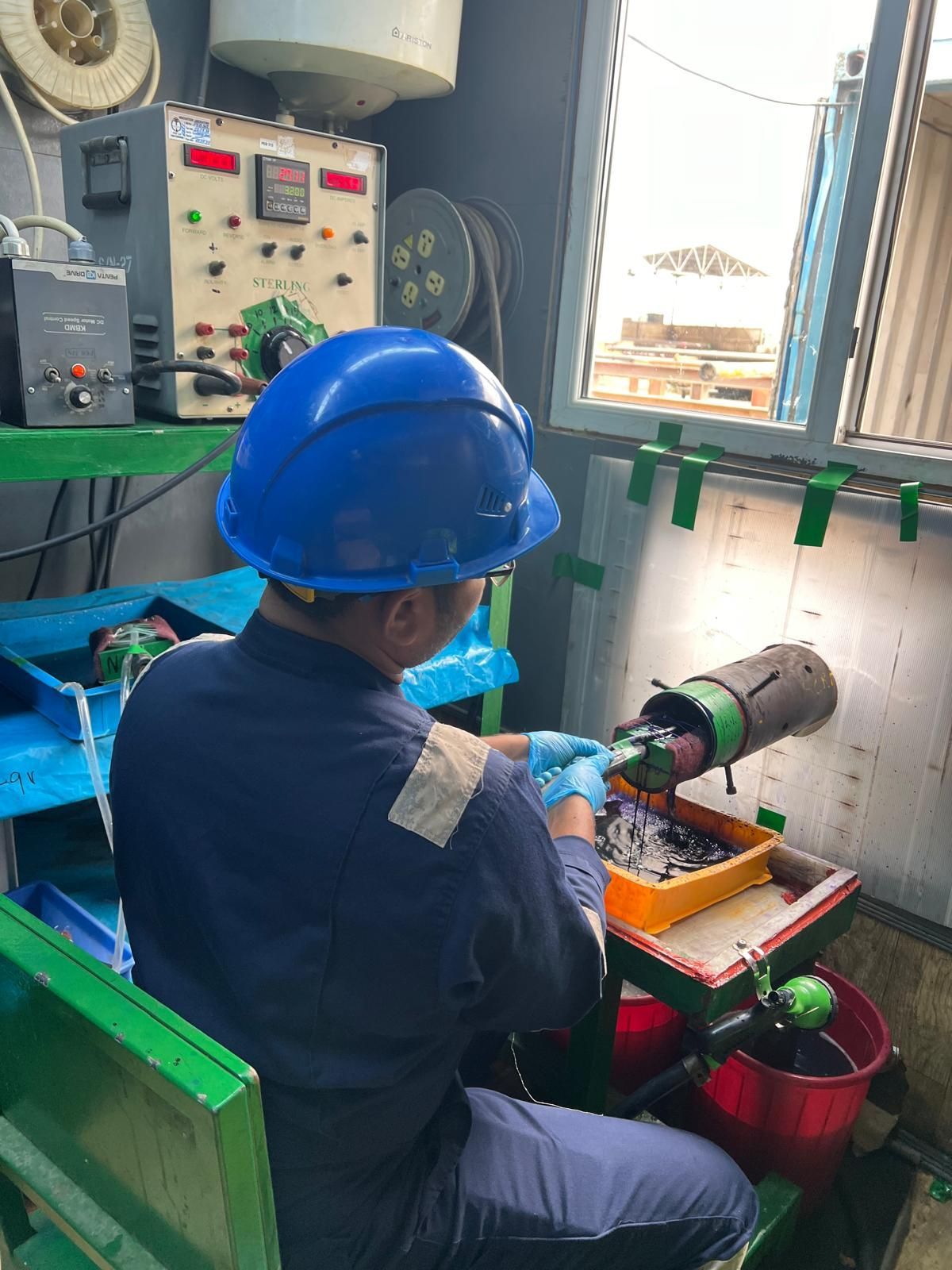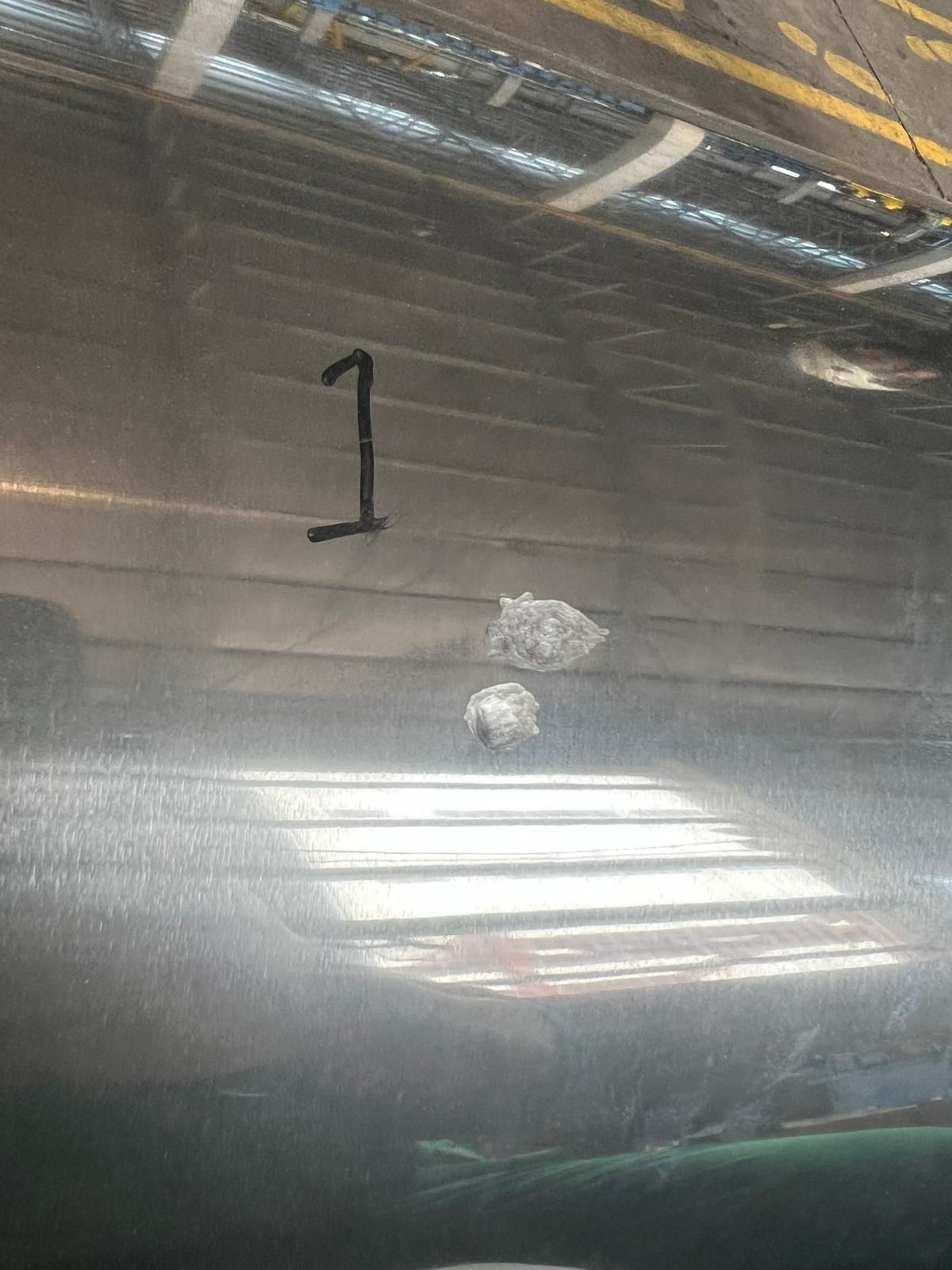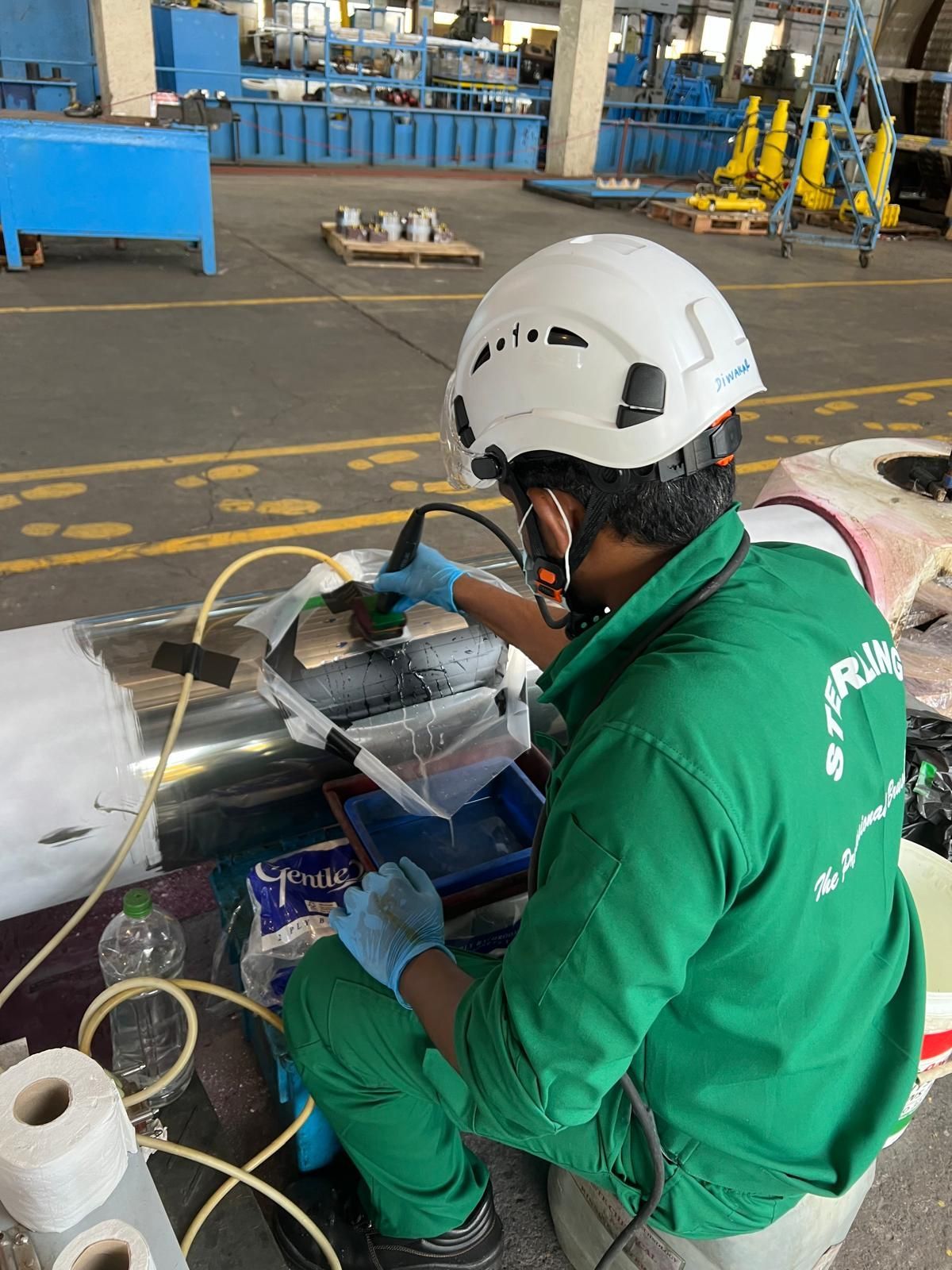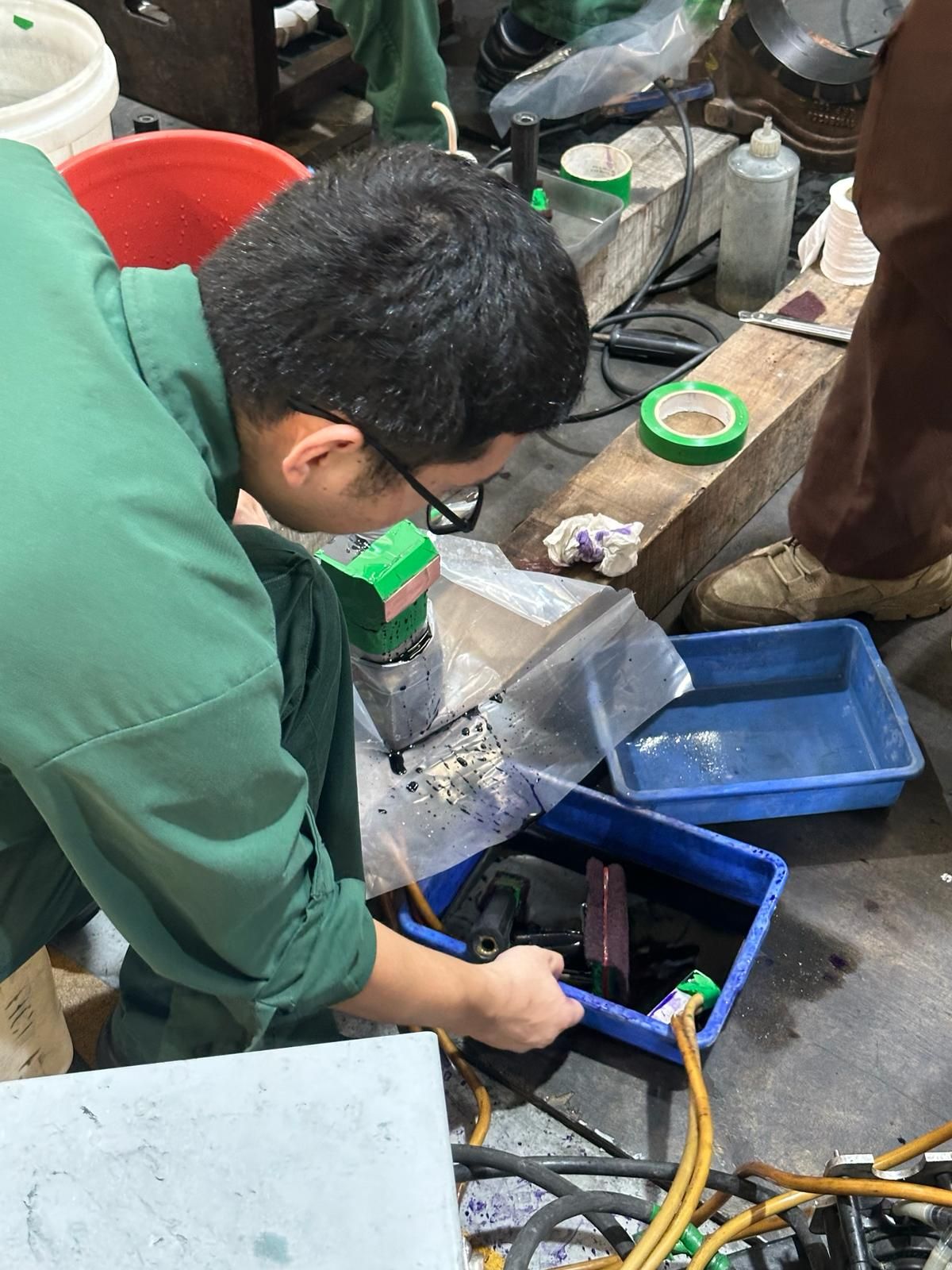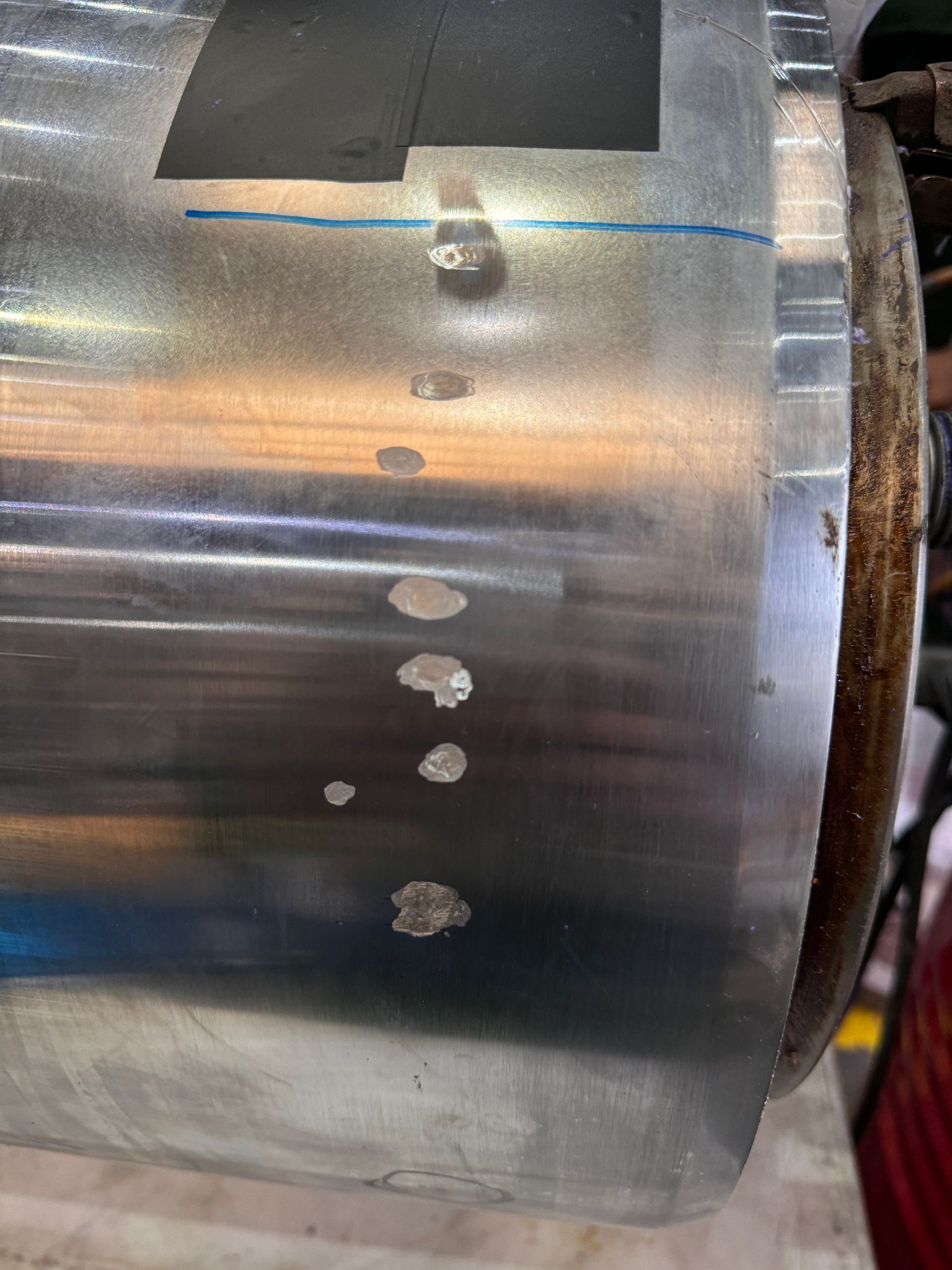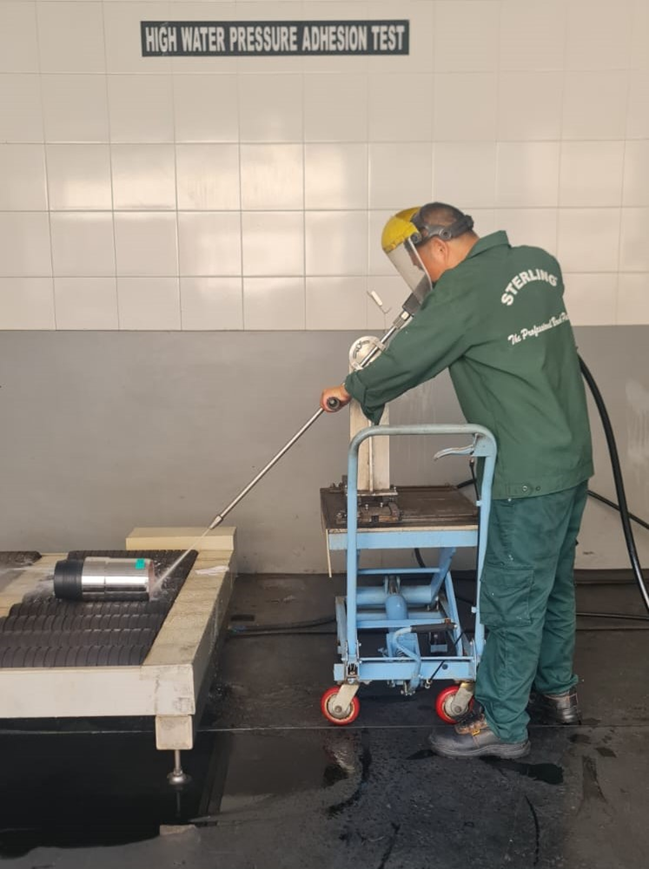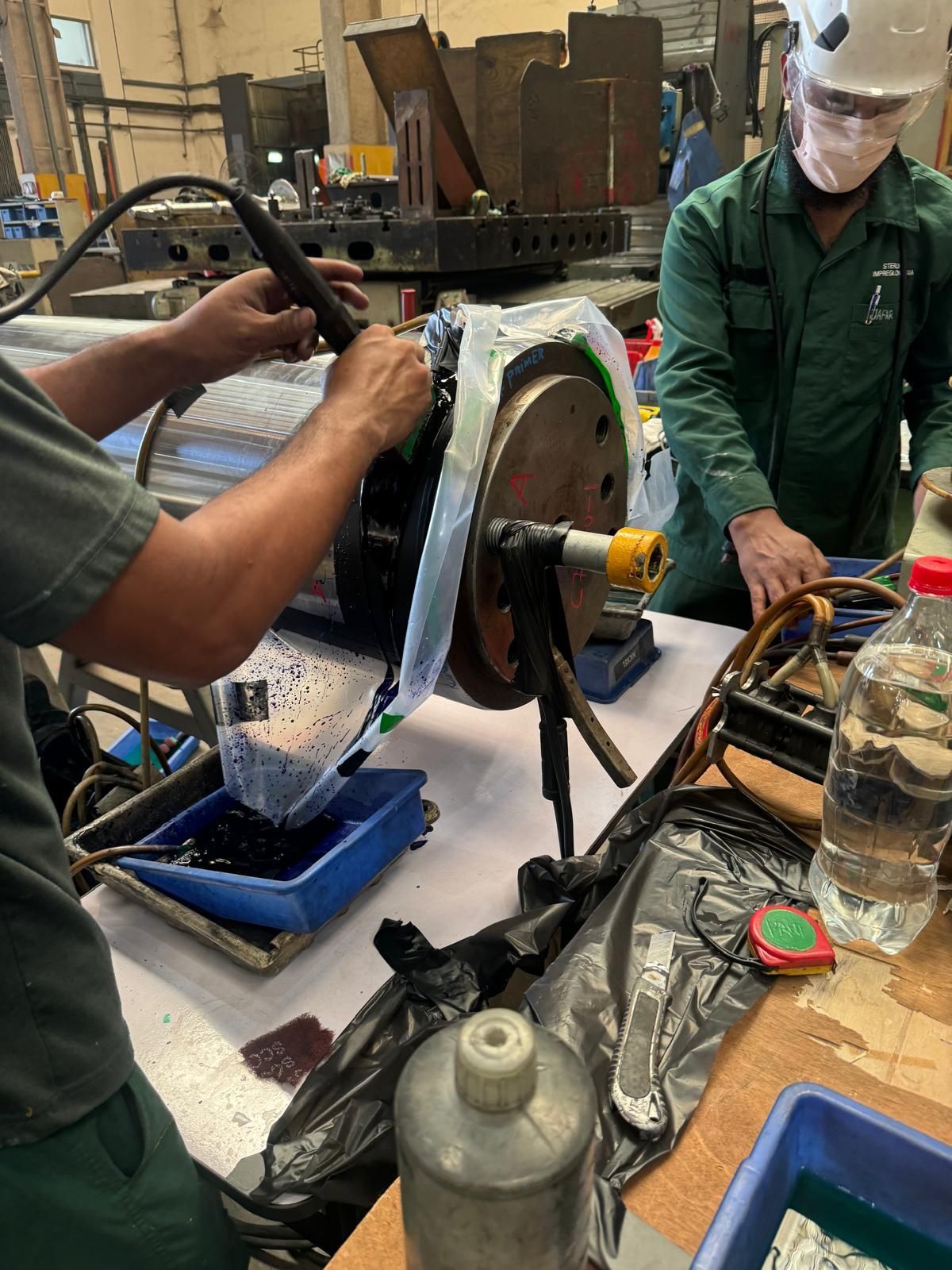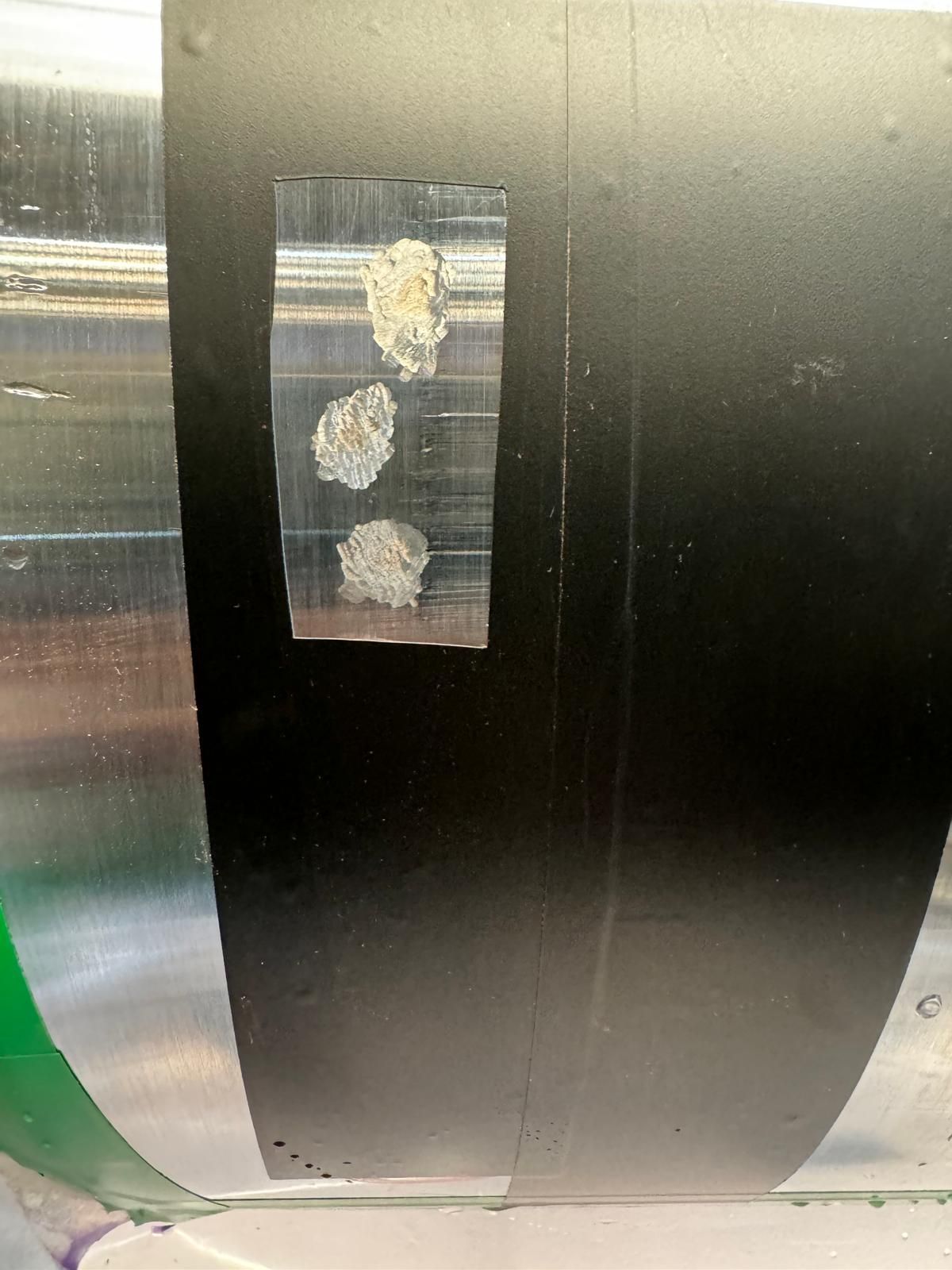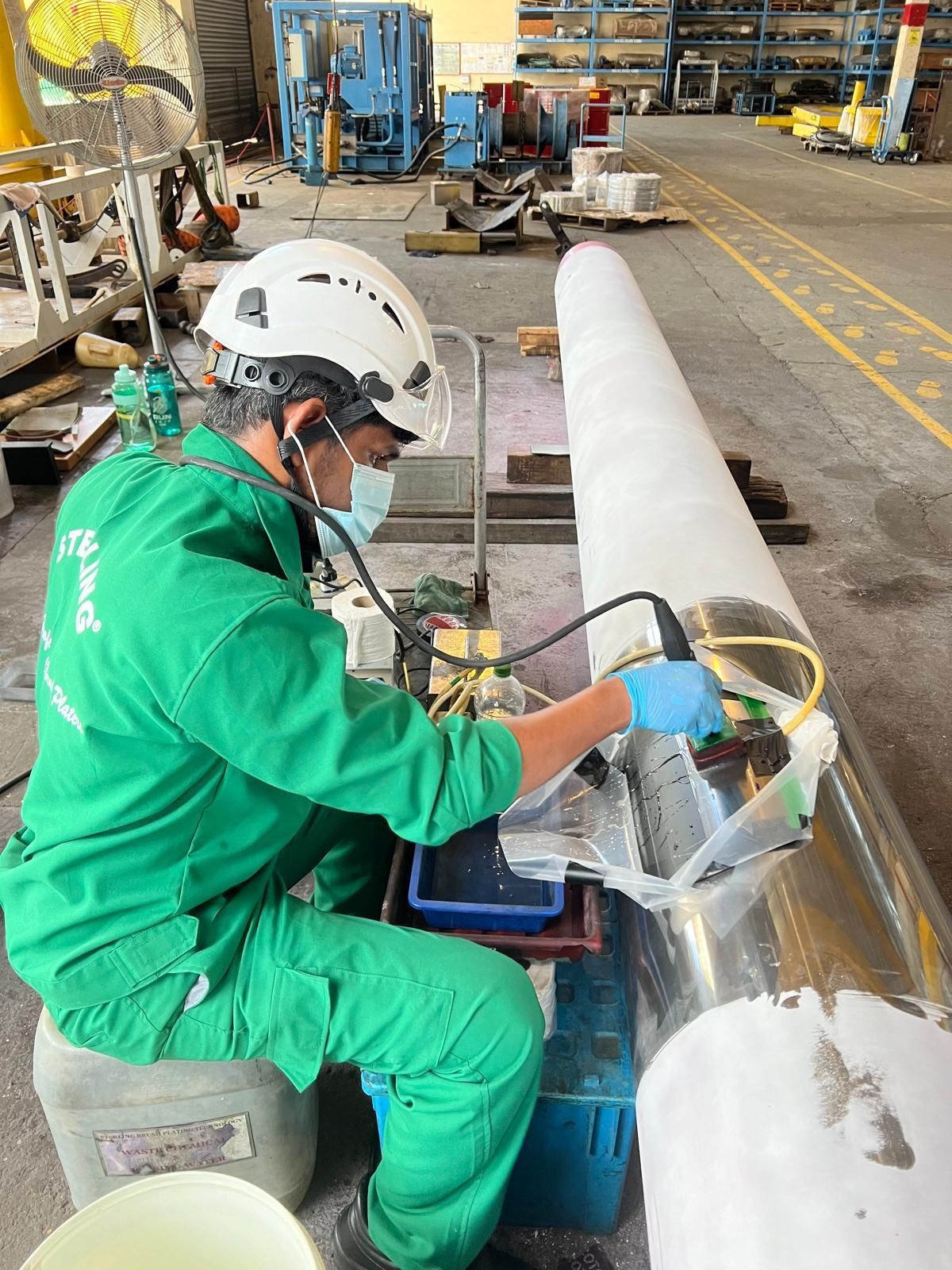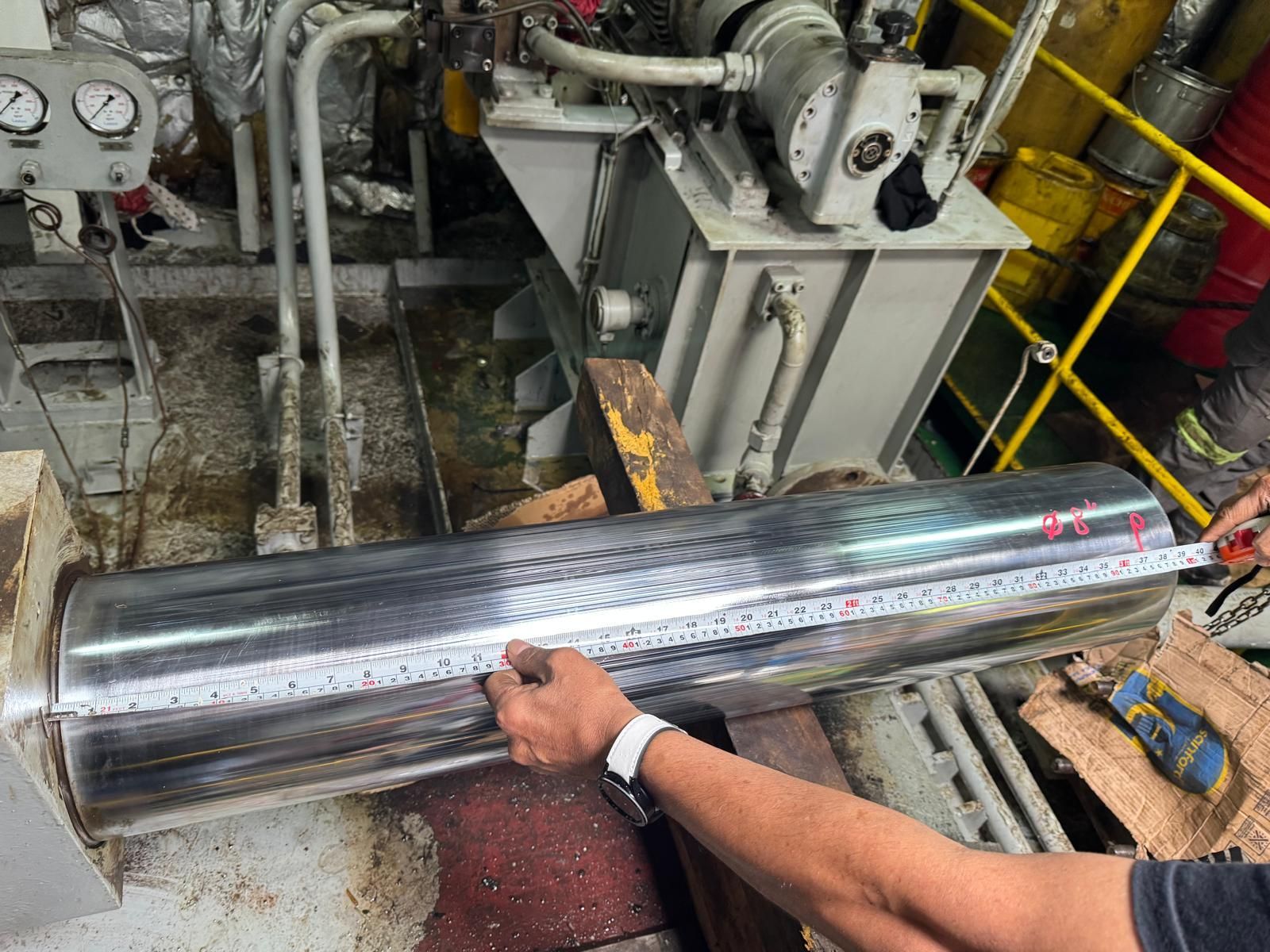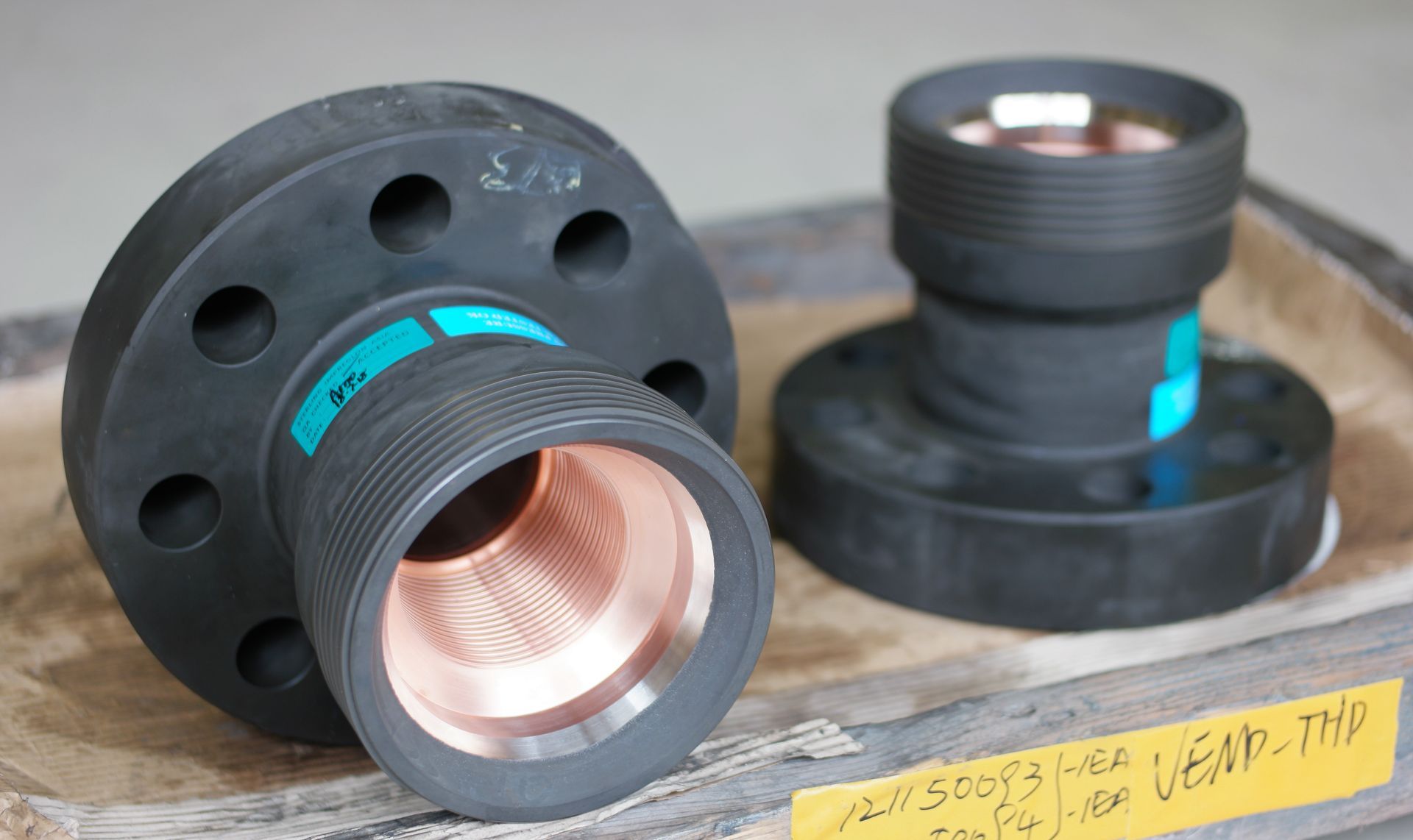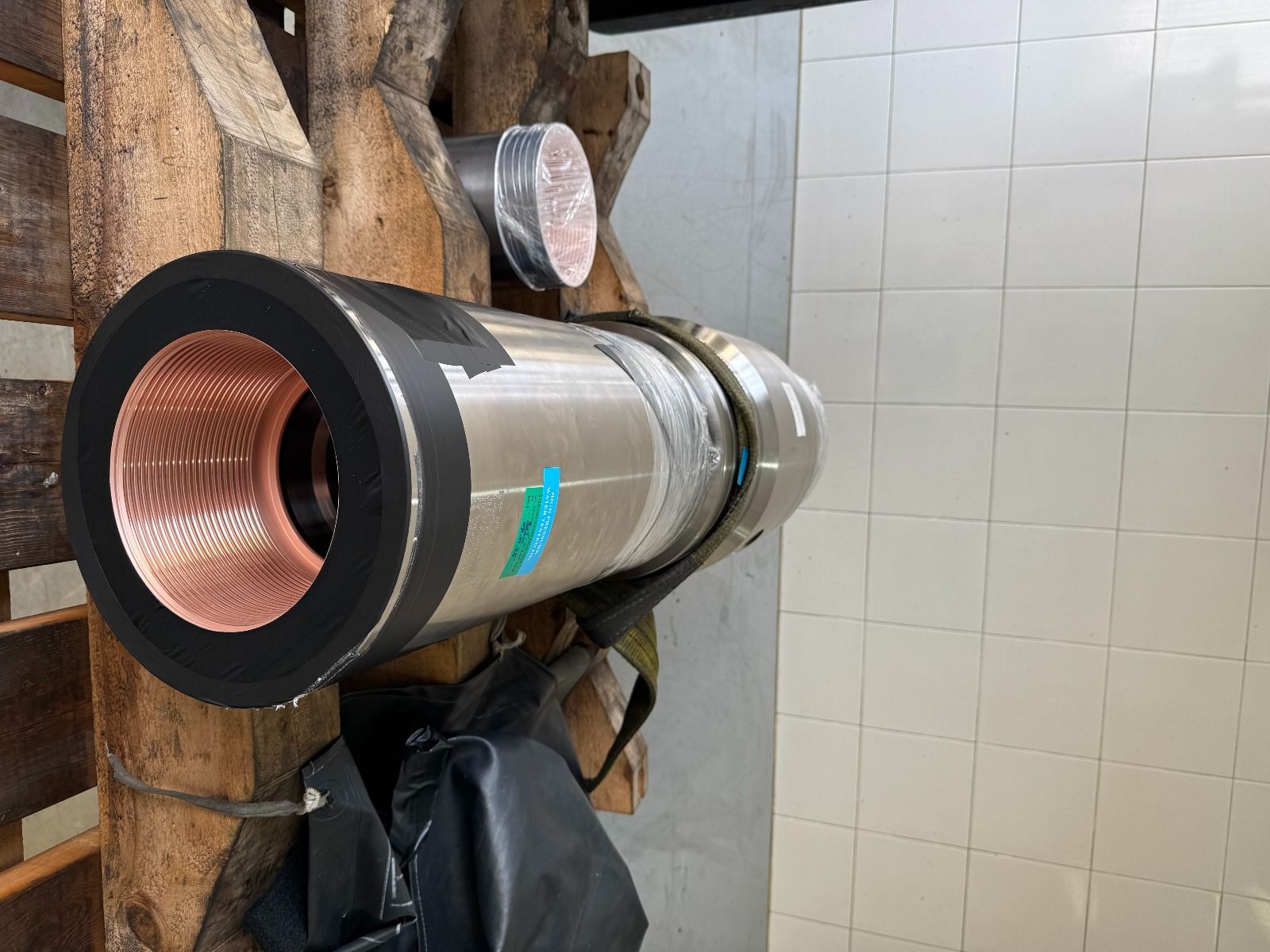The Environmental Benefits of Brush Plating Over Traditional Plating Methods
Environmental Benefits of Brush Plating
At Sterling Impreglon Asia Pte Ltd, we are proud to offer a Brush Plating process that not only delivers superior results but also provides significant environmental benefits over traditional plating methods.
· Reduced Waste
Traditional plating methods, such as electroplating, often produce a significant amount of hazardous waste. These processes involve immersing components in large tanks filled with plating solutions, leading to excess material and chemical waste. In contrast, our Brush Plating process is highly targeted, applying the plating material only where it is needed. This precision drastically reduces waste, making Brush Plating a much cleaner alternative.
· Lower Energy Consumption
Traditional plating methods typically require large amounts of energy to maintain the plating baths at specific temperatures and to power the plating process itself. Brush Plating, however, is an energy-efficient technique. The localized application means less energy is needed for heating and maintaining solutions, resulting in lower overall energy consumption and a reduced carbon footprint.
· Minimal Water Usage
Water usage is another critical factor in the environmental impact of plating processes. Traditional methods require substantial amounts of water for rinsing and cooling, contributing to high water consumption and potential water pollution. Brush Plating uses minimal water, as the process does not involve immersion in large tanks. This not only conserves water but also reduces the risk of water contamination.
· Safer Working Environment
The chemicals used in traditional plating baths can pose significant health risks to workers due to their toxic and corrosive nature. Brush Plating uses smaller quantities of chemicals in a controlled manner, significantly reducing exposure risks and contributing to a safer working environment for our technicians.
· Extended Component Life
By choosing Brush Plating, companies can extend the life of their mechanical components, reducing the need for frequent replacements and minimizing the environmental impact associated with manufacturing new parts. This sustainability aspect is a crucial benefit for industries looking to adopt greener practices.






